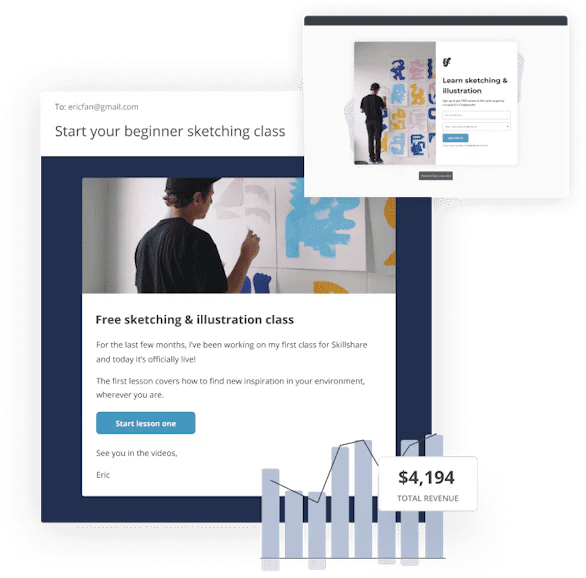It happened at 3:00AM. Chaitra Radhakrishna called her boyfriend, waking him up, euphoric: “I think I know what I want to do in my life.”
It all started with beauty bloggers, her first “friends” after leaving her home of Bangalore, India to move to the US for a job. Home alone at night, she watched YouTube beauty tutorials.
But Chaitra craved her own creative outlet and started a beauty blog as a hobby in 2013. She called it Pinkpot, and it took off.
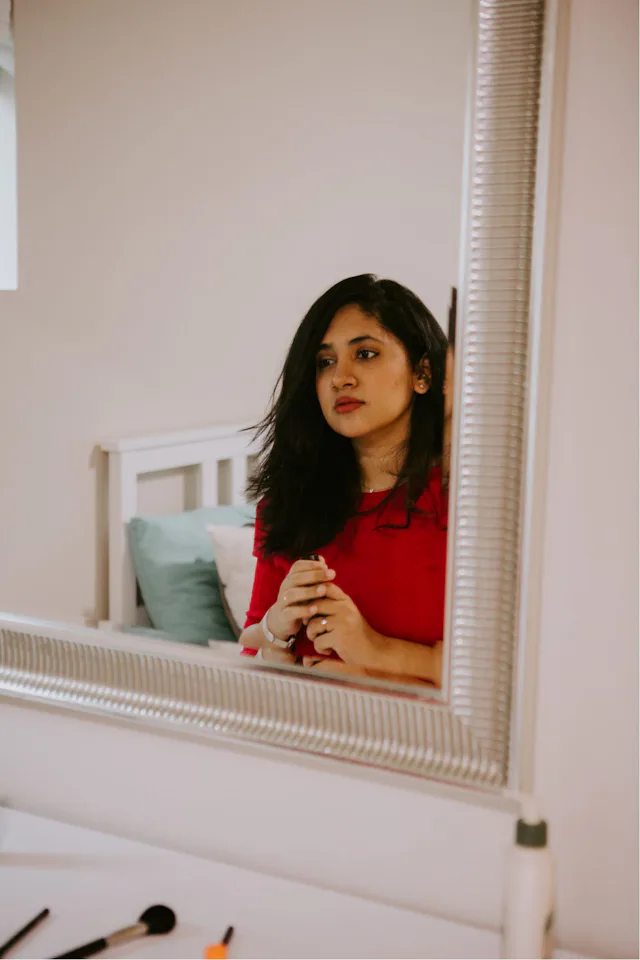
But not at all in the way she expected.
People were responding to Chaitra’s content – but they weren’t asking about hair and makeup. They wanted to know how she made her photos look so great and what she was using for her blog design.
With a Master’s Degree in computer science, Chaitra knew how to code and was “a bit of a fanatic for design and photography; my whole goal was to make it look good.”
She started answering people’s design questions. It energized her.
She’ll never forget how shocked she was to see a time on the clock that she’d never seen before: 3:00AM. Chaitra tells me she is known for falling asleep early, always in bed by 11:00PM. “Nothing can ever keep me up at night – not a good movie, not anything.”
Until she started helping people with blog design.
A creator knows she’s found her craft when time itself disappears.
She had no idea how to pursue what she was doing as a job, but she couldn’t keep the feeling to herself and called her boyfriend at 3:00AM to share the revelation.
“Nine-to-five job people.”
For seven months she worked as an academic researcher by day and blogger by night. She wanted to pursue her blog as more than a hobby, but she was nervous: “How would I bring in money?”
She started researching all the ways you could monetize a blog and chose her favorite – making her own products. She created five website templates and sold them for $30 each.
Her first goal? Make $500 a month.
She made $760 that first month, February 2015. She still cites it as her dream-come-true moment: “It was so special. That first sale, nothing can match that, you know?”
By the end of 2015 she was making $2,000 each month.
“I always grew up with this mindset of I’m going to work nine-to-five. Entrepreneurship is not for ‘people like us,’ because we don’t believe in taking risks. I was really scared.”
Her research job was also progressing. Both were taking up a lot of time and energy and she wasn’t sure how long she could do both at the same level. The university was offering her advancement, and her blog was requiring more, too. She had to make a choice on what would come first: go all in on the blog or the academic career path?
One was risky.
One was safe, nine-to-five.
Her parents, she tells me, were very much “nine-to-five job people”. Security, saving, and not taking risks were key tenets of their unspoken family motto. Chaitra understood completely where her loving parents were coming from though. They had “a more challenging upbringing. They just wanted to be safe and protect us.”
She also liked the research job. Struggling inside her own head to make a decision, she asked her 3:00AM-boyfriend-now-husband for his advice.

Chaitra and her husband in one of her favorite brainstorming spots.
Knowing how much she liked to make pros and cons lists, he said:
Make the pros and cons list, then throw it away and do what you feel like doing.
She went full-time on her blog in August 2015. It was a big risk, but one she was excited about. At least for a while.
It didn’t take long for the fear of failure to follow.

“There is no clear formula that tells you This will work.”
The reality of the big change she made hit her later: “I always grew up with this mindset of I’m going to work nine-to-five. Entrepreneurship is not for “people like us,” because we don’t believe in taking risks. I was really scared.”
The steady beat of her old paycheck was replaced with What if this doesn’t work?
The fear slowed her down in the beginning. “I feel like I would have done it faster if I didn’t give that fear importance.” She tried to plan everything out perfectly – reduce the risk – trying to make sure that everything she tried “would definitely work” before taking the next step.
But the doubt-induced-slowness started to irritate her. Sick of her own paralyzing fear, she realized that she was chasing after a kind of security that didn’t exist. “There is no clear formula that tells you ‘This will work.’ I was just wasting time.”
She learned how to recognize her hyper-planning, false-security-chase mode in the moment, stopping it like a state trooper pulling over the car driving under the speed limit.
Her fear of failure was finally under control. Until she was faced with actual failure.
“I feel like I would have done it faster if I didn’t give that fear importance.”
What went wrong?
It started with the failure of the DSLR camera she was renting from the university in her early blogging days. It broke during a brand photo shoot and she had no other choice but to use her iPhone to take the pictures instead. To her surprise, and the brand’s, the photos came out great.
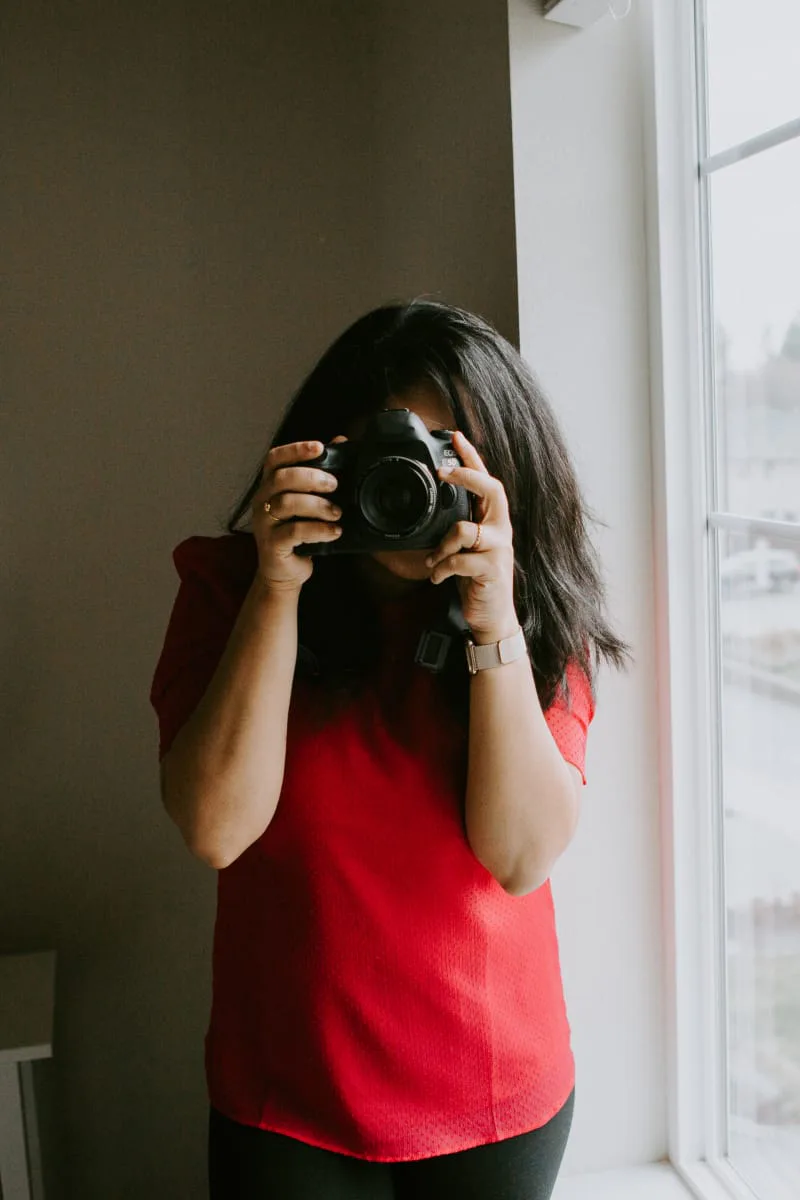
She started using her iPhone for all her blog photos, and her audience was shocked (and excited) by what she was doing. With her first iPhone stock photography pack growing her email list like crazy, she got an idea: What if I built a course that taught people how to take their own great photos with their iPhone?
She did a beta test of the course, offering 10 spots for about half the price, $97, to her email list. The beta response was great – so great that she had to rush to close the cart when she realized 16 people had purchased. They loved the course, and with such a successful beta, Chaitra couldn’t wait to see what would happen when she launched it to a wider audience. “I had huge expectations.”
But when she launched her course in November 2016, “the response was very cold. I had not expected it at all.”
She was dejected and confused. The failure seemed to confirm her worst fears. She researched. She planned. She tested. “It still failed.”
She was left alone with the question all creators must face at some point:
What went wrong?
“Go see why it failed.”
It’s not a question that has to be answered right away. For most creators, grieving must come first.

“I cried for a couple days. When something doesn’t go the way you expect, you start taking it very personally. Oh I did something wrong. Or maybe my customers don’t like me? Maybe my customers don’t like the course I created?”
And then, the ringer:
“Maybe people just don’t think I’m good enough?”
But such crises of confidence, if allowed but not gripped, often make space for new resolve. “So this is what failure looks like,” Chaitra said to herself after the tears dried, “This is what you were fearing, and it’s not too bad. It’s not too bad at all.” She’d survived.
Her new plan? “Go see why it failed.”
All those ugly voices she was reacting to were really only in her head. No one had actually said any of those things to her. She realized if she dove a little deeper she could focus on what actually needed fixing.
The more she separated herself from the failure, from the event, from even the course itself, the more empowered she felt as a creator.
Because, after all, she was the only one with the power to fix this, to find a solution and try again.
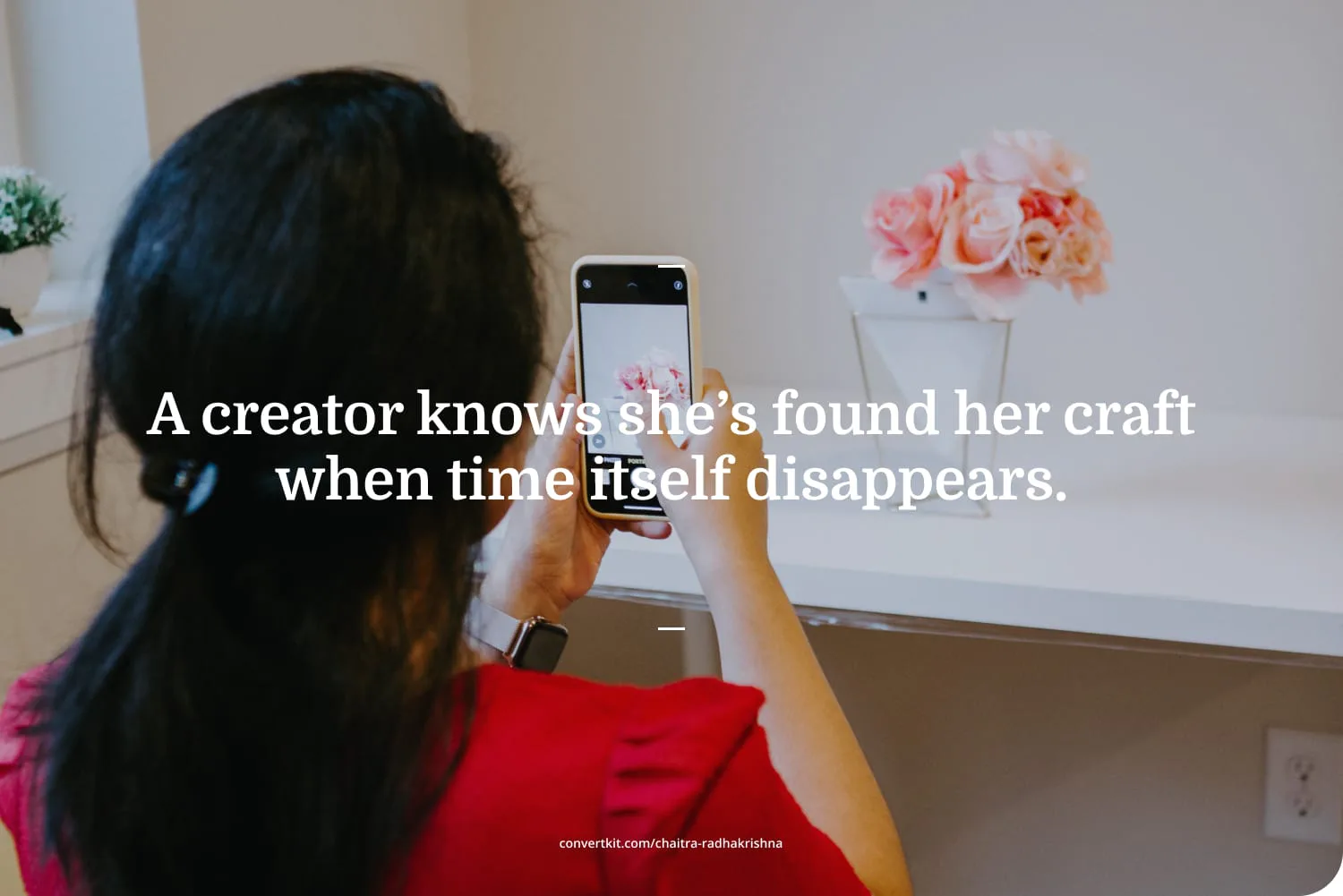
“All you can do is keep experimenting.”
Chaitra dedicated the next three months to putting on her research hat once more, interviewing those who bought the course and those who didn’t, studying her course launch emails, and trying to figure out what went wrong.
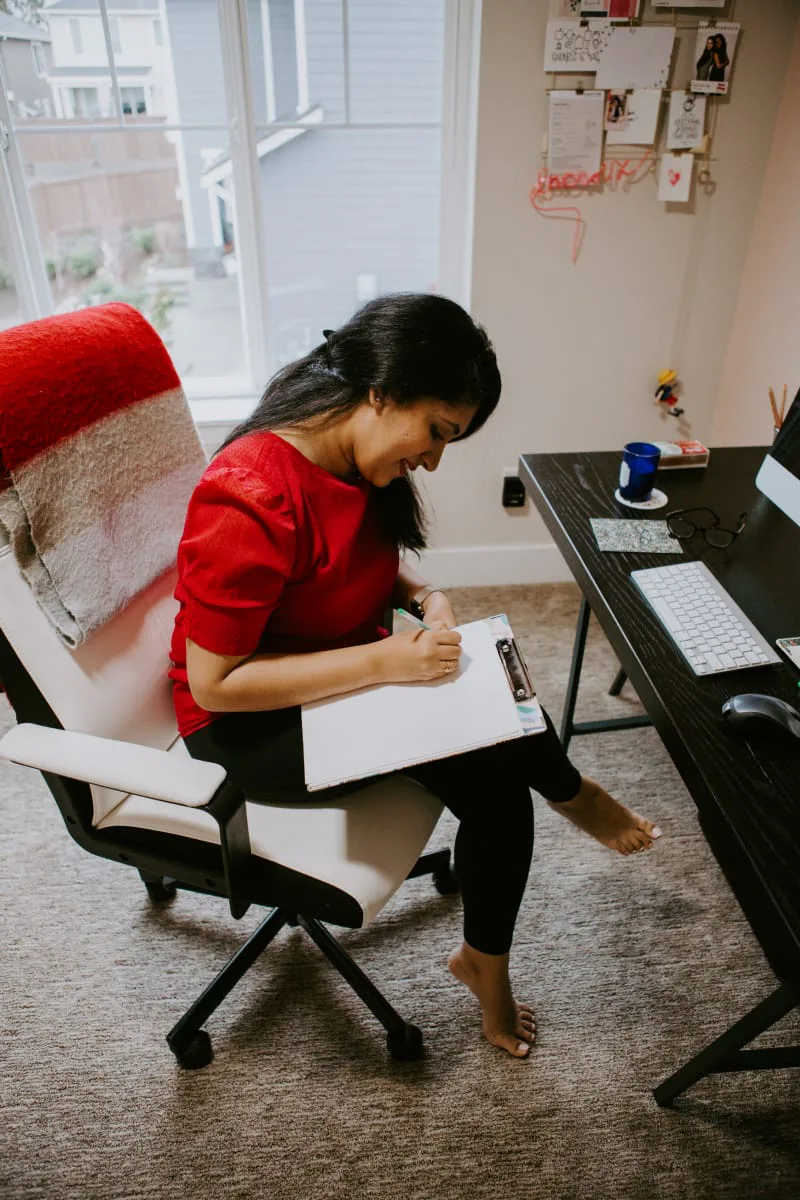
She found three problems and implemented three solutions.
Problem 1: She didn’t spend enough time on the launch details.
She got so wrapped up in creating the course that she neglected putting the same time and attention in the copywriting and strategy that go into a product launch. People clearly loved the course and found it wildly helpful – the problem wasn’t with the course. It was with the launch.
Solution 1: Put the same time and energy she put into the course content into the launch content.
Problem 2: The first launch emails were all about her.
Her first launch emails talked mostly about the course curriculum and what excited her about the course. The emails didn’t spend enough time answering the only question that really mattered – How would the course make a difference in the businesses and lives of the students?
Solution 2: She rewrote her entire email launch sequence to focus only on how the course could help someone’s business, and laid out in great detail who the course was right for and who it wasn’t right for. Her emails had an educational tone, but this time, instead of teaching them what was in the course, she focused on teaching them how the course would help.
Problem 3: Some people could afford $97 but couldn’t afford $197.
“So this is what failure looks like. This is what you were fearing, and it’s not too bad. It’s not too bad at all.”
To encourage students to buy the beta course, she’d offered it for half price, but when it came time to launch the course at full price, she heard crickets. While most weren’t ready to make the investment because they didn’t yet understand how the course would add value back into their lives and businesses, there were a select few who simply did not have that kind of money to invest in their business right now.
Solution 3: Chaitra created a second pricing tier with a pared down version of the course to provide support to those who couldn’t afford to spend more than $100.
She launched the course again, with the big goal of 100 students.
She got 250.
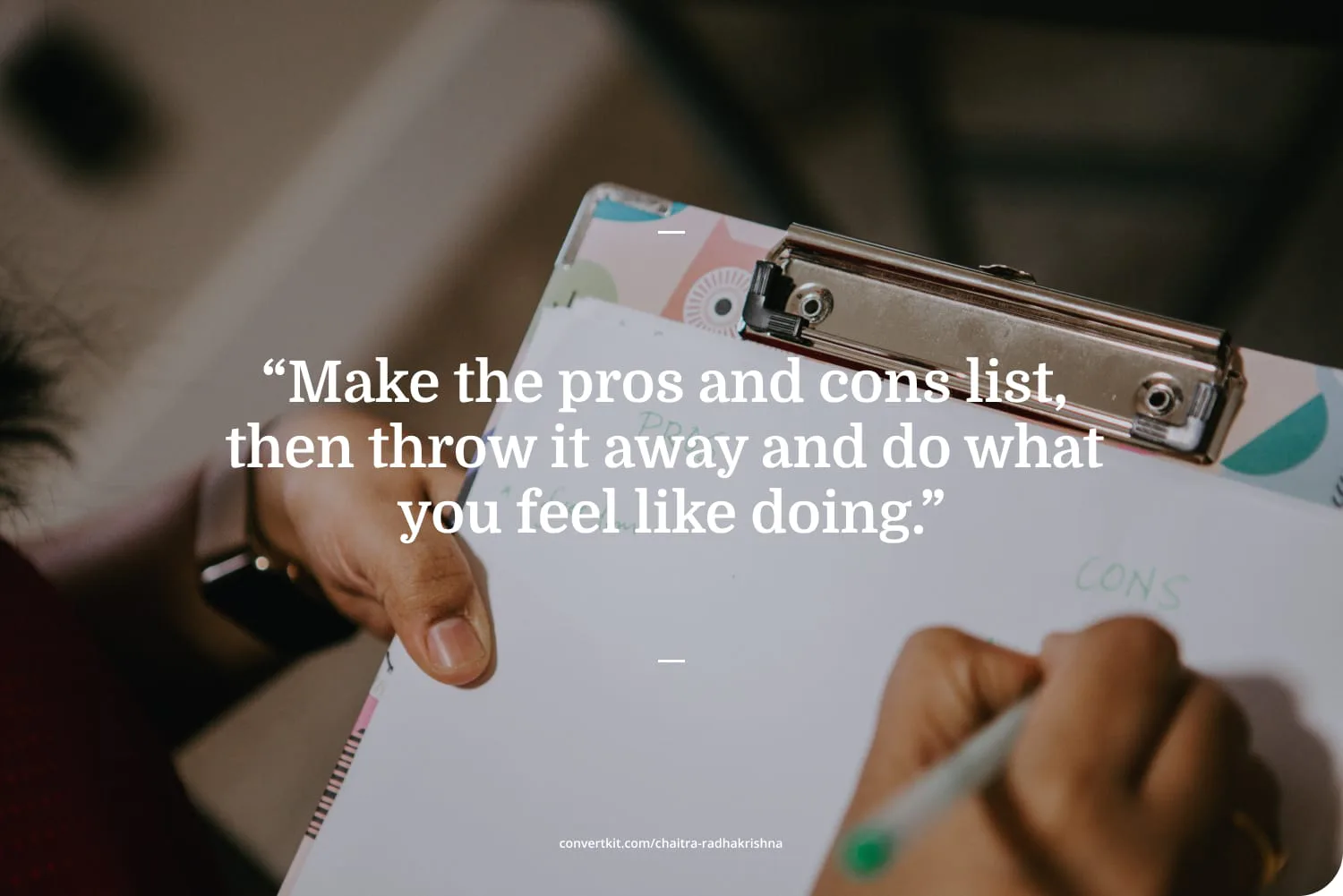
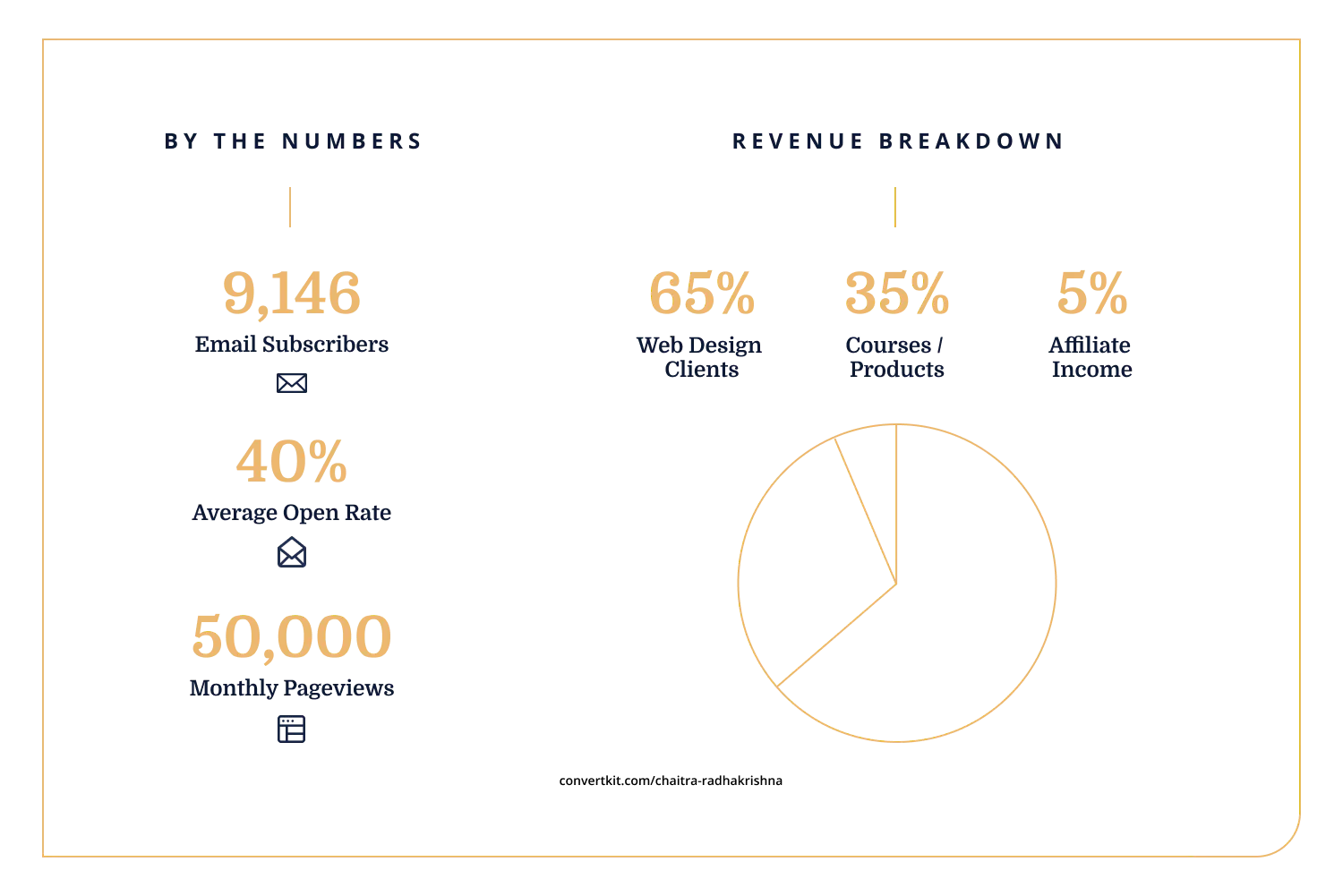
“Nobody can tell you if something is going to work or not because they don’t know either. All you can do is keep experimenting – trial and error. Keep tweaking, see how people respond, and keep going.
“I realized what failure actually looks like and that it’s nothing to be fearful about. I think the best way to get over failure is just go face it. Let it happen; let something not go the way you expected.”
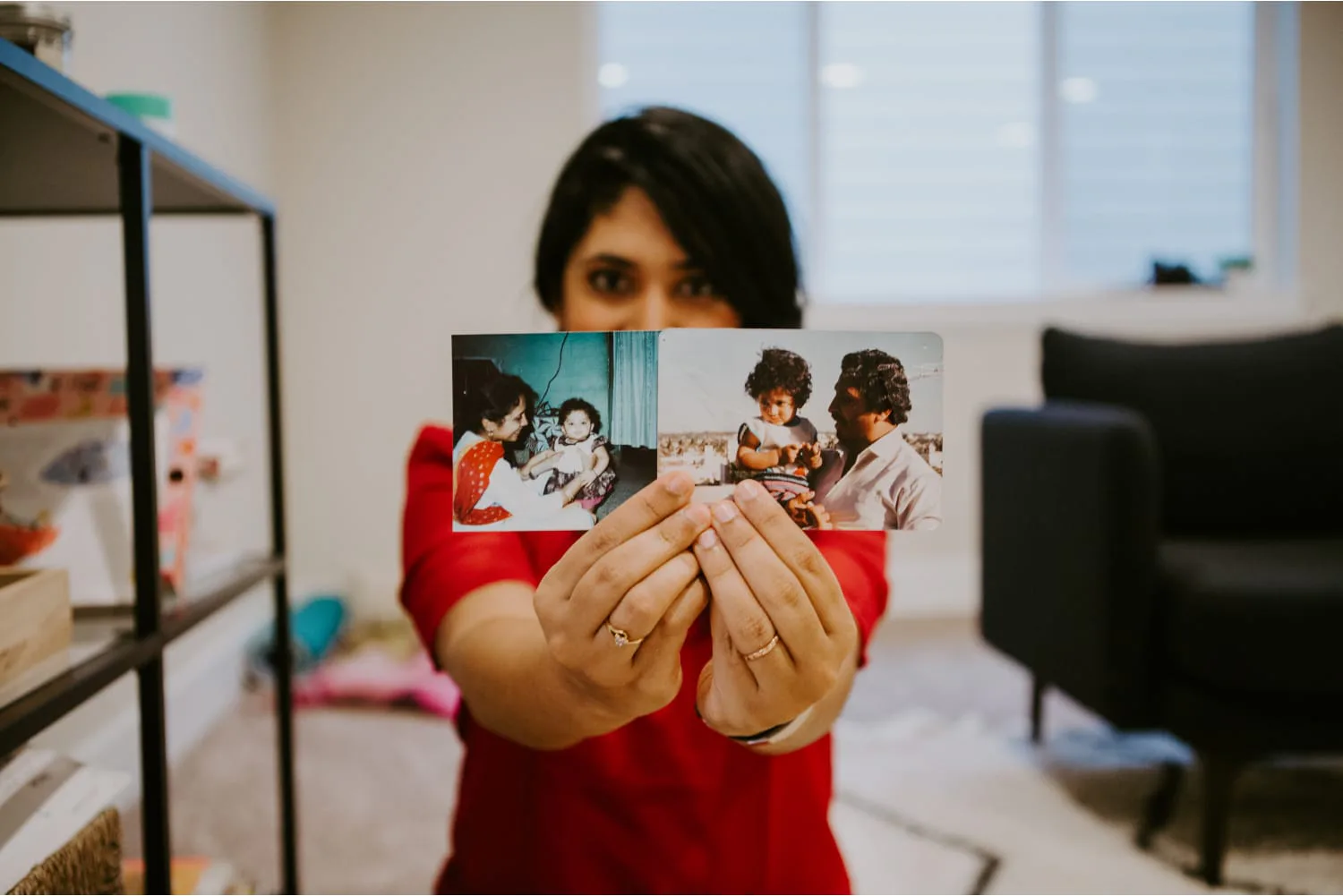
Young Chaitra with her mom and dad.
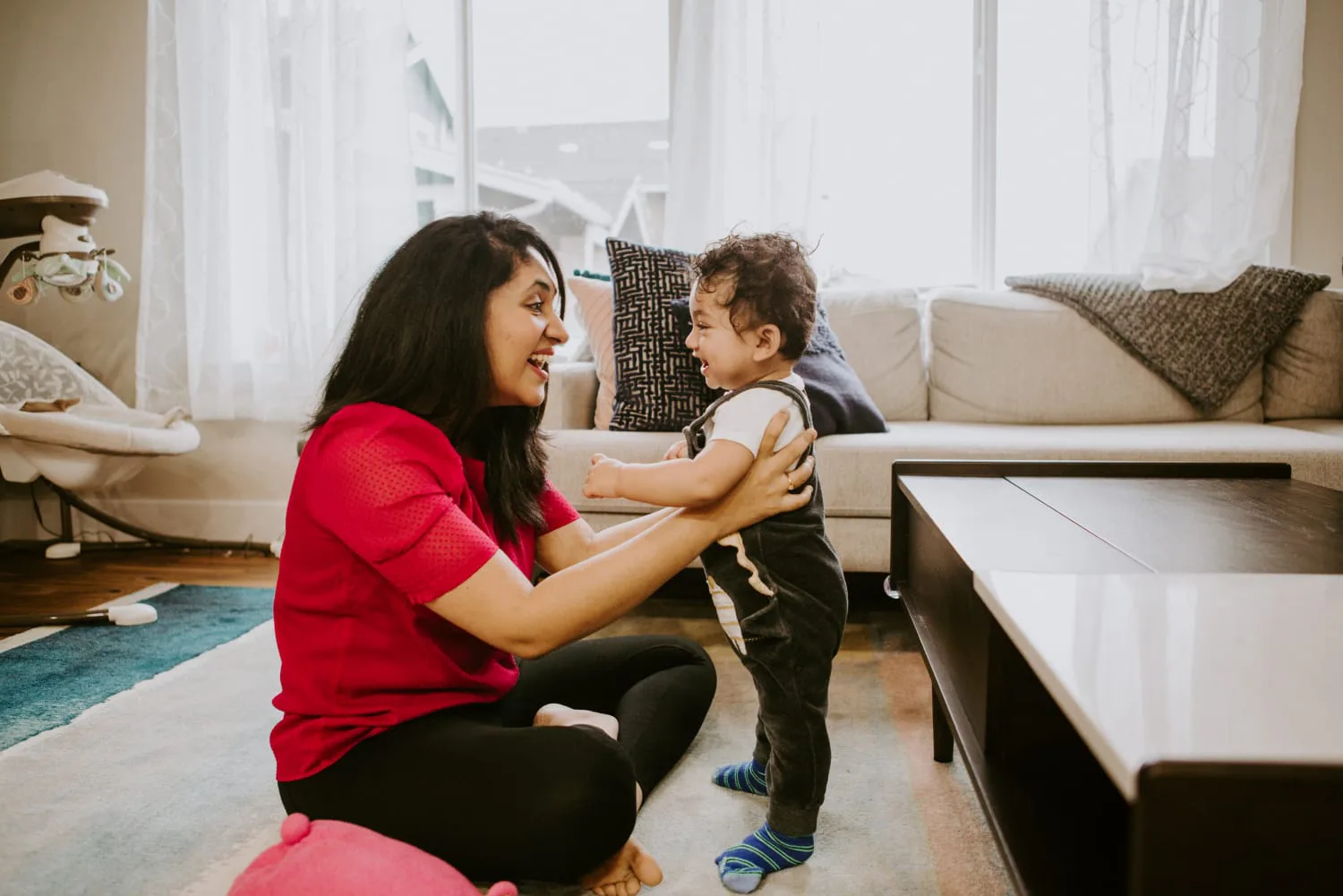
Chaitra says getting to stay at home with her son has been her greatest gift and motivation.
The other side of failure.
That’s not to say facing her fears is ever easy.
Later when Chaitra was asked to speak at AltSummit, a well-known blogger conference, she was terrified – but not of public speaking.
She was terrified of her own voice.
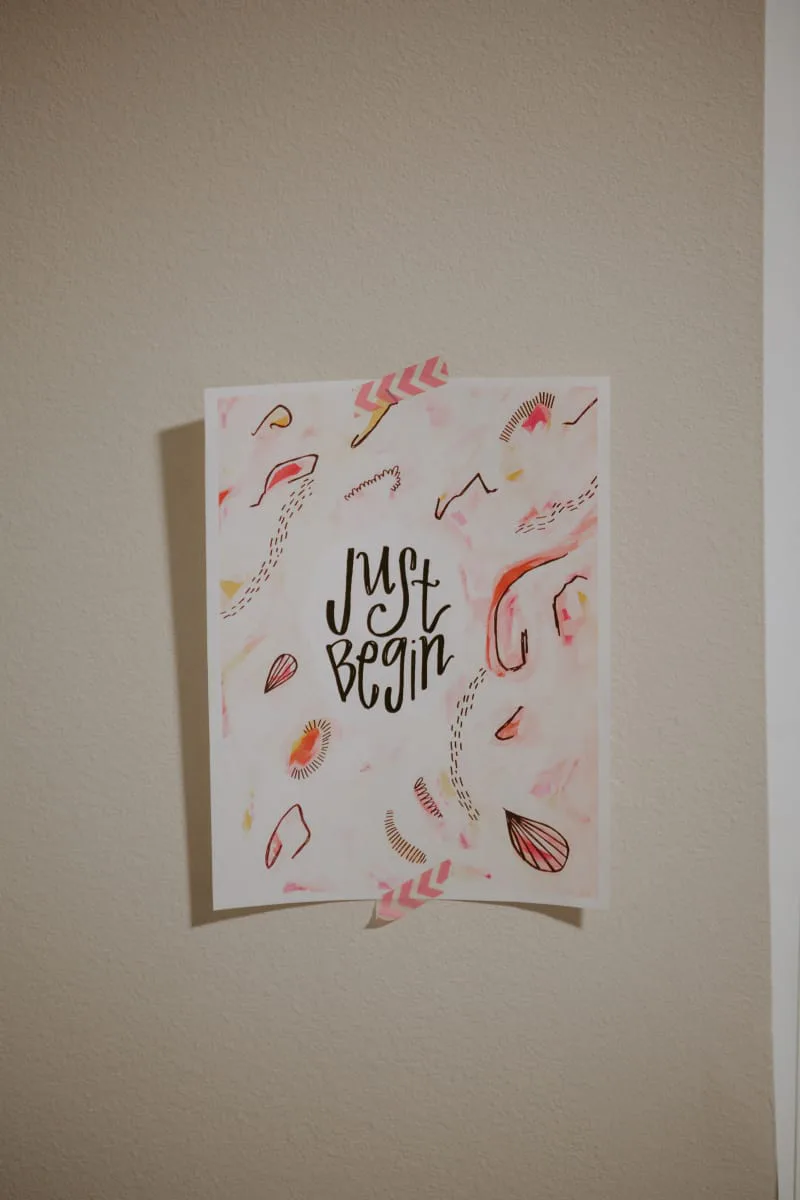
The “Just Begin” print hanging on Chaitra’s wall, by Caroline Kelso; @ckelso.
“I was always conscious about my accent; I was really nervous somehow people would not understand what I was trying to say.” But her desire to connect was greater than her fear. It would be the first time she’d take her business outside her house.
She showed up, hoping her presentation would make a difference, even if only one or two people understood her.
The audience response changed her forever.
People lined up to thank her. She remembers with great joy how some even said, “Your accent is so cute.” She was embraced. It gave her new confidence, along with a new creator’s creed: “Just be you and it’s going to be great.”
Chaitra shared her revelation on Instagram a few weeks later and people commented like crazy, sharing their own stories of insecurity and ambition, thanking her for the courage to own her beautiful, perfect voice. While she often felt different, she realized she was far from alone.
On the other side of her fears was the kind of community and contribution she’d been dreaming of when she moved to a new country by herself. The gains were always so much greater than the losses she’d imagine in her head.
“You’re not gonna lose anything by trying. So just go ahead and try it out. It’s totally okay if you fail; the bigger failure is thinking one day, What if I’d tried?”
The other side of failure, Chaitra says, is “beautiful. Even if it doesn’t work out. So what! You at least tried, right? You at least know that you gave it your all. Be courageous and go for it. Feel the fear and do it anyway.”
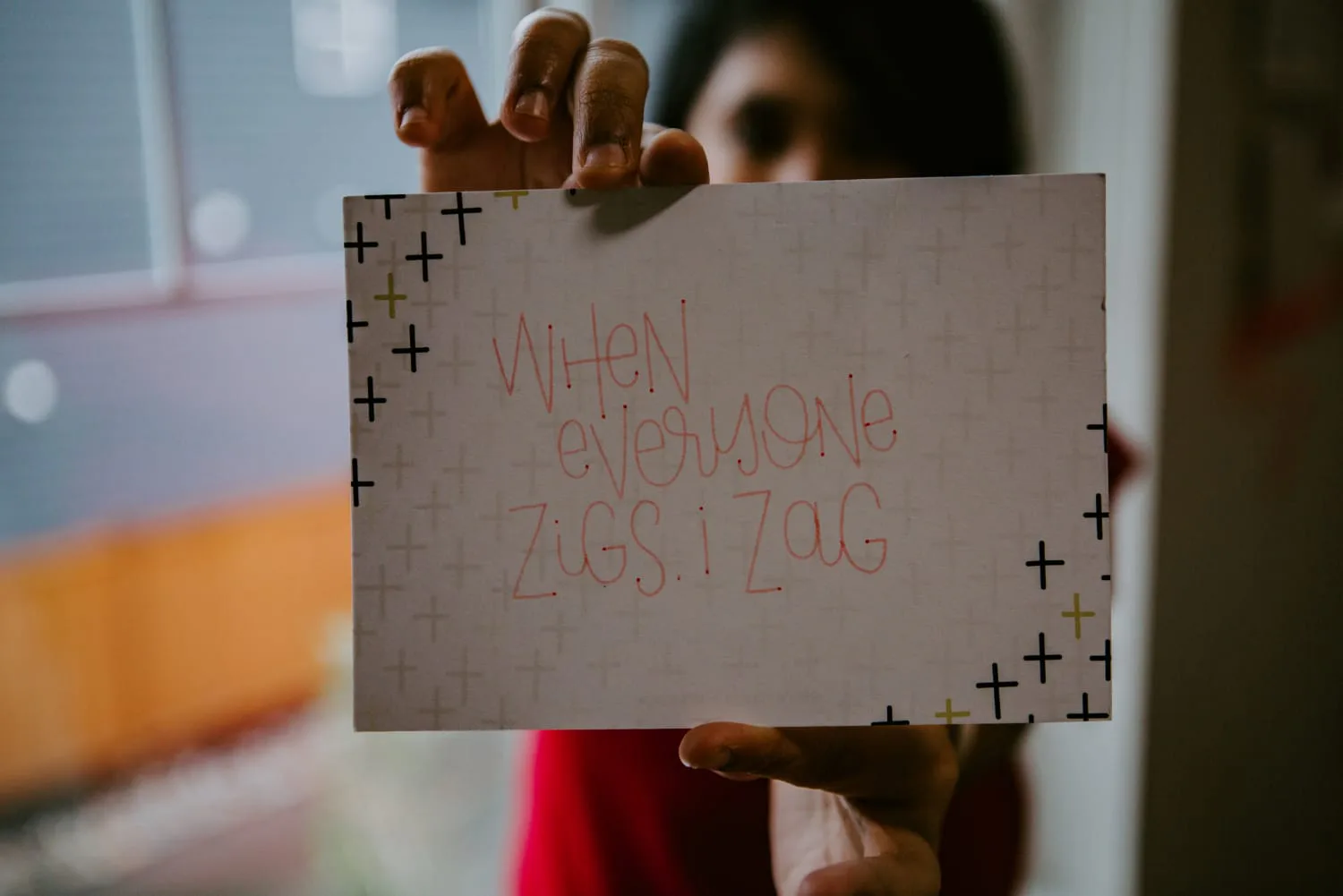
Chaitra’s motto.
You can connect with Chaitra on Instagram or visit her website at pinkpotstudio.com

